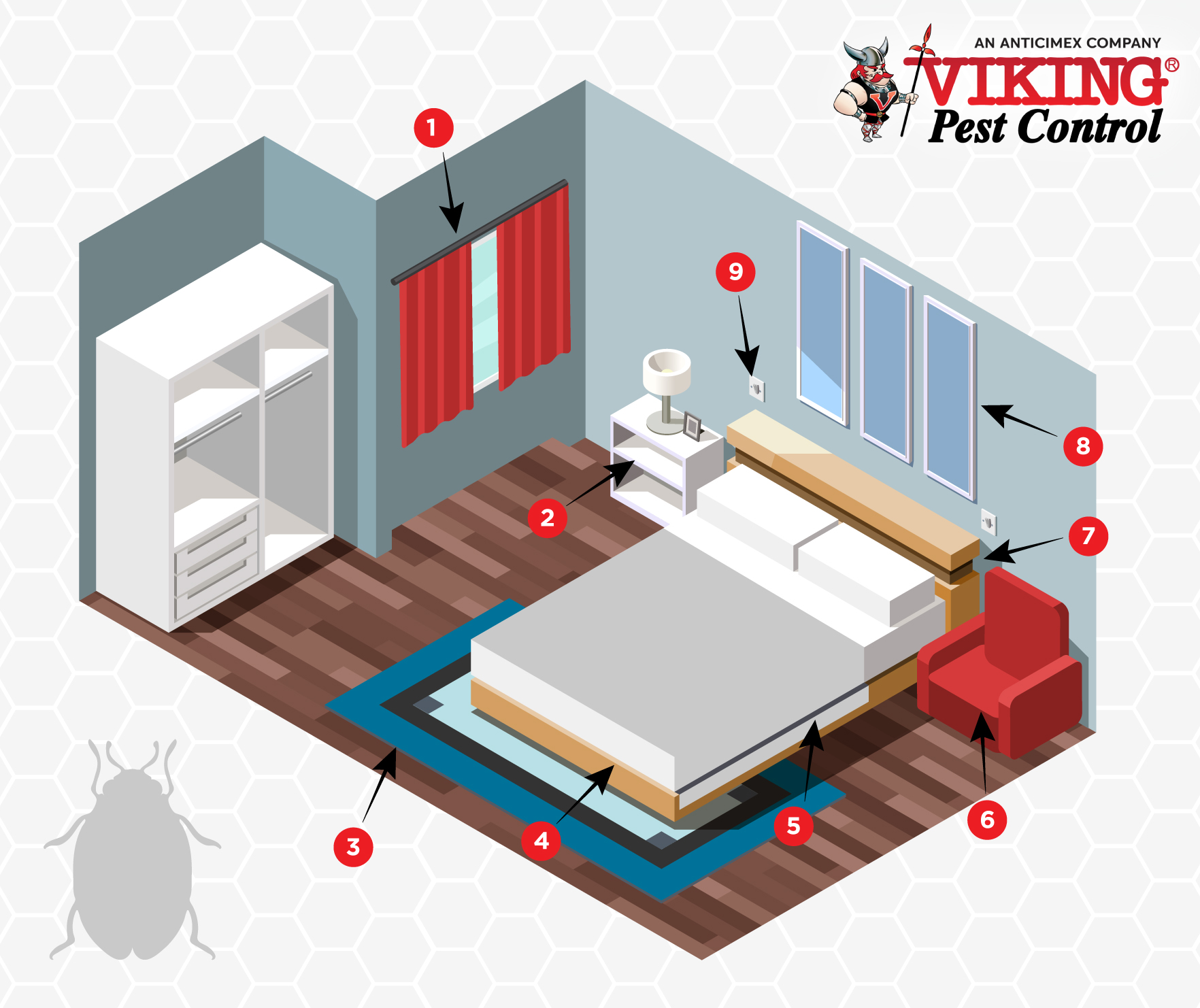Professional Kings Bug Control Cincinnati: Your Relied On Pest control experts
Professional Kings Bug Control Cincinnati: Your Relied On Pest control experts
Blog Article
Kinds Of Insect Control: Which Approach Is Right for Your Problem?
When encountered with a bug infestation, the choice of an ideal approach for bug control is essential in successfully taking care of the circumstance. By exploring the numerous types of parasite control approaches available, individuals can make educated choices tailored to their one-of-a-kind conditions, making sure a more sustainable and efficient outcome in parasite elimination.
Chemical Parasite Control
Chemical parasite control involves making use of synthetic or naturally derived chemicals to take care of and eradicate pest populaces properly. This method is typically made use of in farming, forestry, and household settings to combat a large range of bugs, including weeds, insects, and rodents. Making use of chemical pesticides can supply fast and targeted solutions to pest invasions, making it a prominent selection for several individuals and organizations.
One of the vital benefits of chemical parasite control is its capability to swiftly remove bugs, reducing the threat of damage to crops, property, and human wellness. By utilizing details chemicals that target particular bugs, this approach can successfully control invasions while minimizing damage to beneficial microorganisms and the atmosphere when used appropriately.
However, using chemical insect control additionally increases problems about possible damaging results on non-target species, water resources, and human health and wellness. It is important to follow safety guidelines, apply chemicals properly, and think about different pest control approaches to minimize these threats and guarantee lasting pest administration practices.
Biological Insect Control
Organic insect control, additionally called biocontrol, makes use of living organisms to handle and minimize insect populaces naturally. This technique harnesses the power of nature to control parasites without the demand for synthetic chemicals. Biocontrol can include the intro of natural adversaries of the parasite varieties, such as killers, parasites, or microorganisms, to subdue insect populations. By utilizing the bug's all-natural predators or pathogens, organic bug control provides a ecologically friendly and sustainable solution to pest administration.

Mechanical Pest Control
Making use of hands-on and physical approaches to take care of insect populations, mechanical pest control uses an alternate approach that does not rely upon making use of living organisms or synthetic chemicals. This technique involves making use of obstacles, traps, or various other gadgets to physically deter or get rid of pests. By obstructing pest access points or setting up catches to catch them, mechanical pest control can efficiently minimize infestations without introducing chemicals right into the setting.
One typical instance of mechanical parasite control is using mesh screens on home windows and doors to stop insects from going into buildings. This easy yet efficient technique serves as a physical obstacle, keeping insects out while permitting appropriate ventilation. Furthermore, devices like mousetraps, fly swatters, and ultrasonic repellents drop under the mechanical bug control category.
While mechanical insect control approaches can be labor-intensive and need regular surveillance and upkeep, they use a eco pleasant and sustainable solution for handling bug invasions. By combining different mechanical methods, residential or commercial property owners can produce a thorough bug control approach that minimizes reliance on chemical pesticides.
Physical Pest Control

Some common physical pest control approaches consist of using barriers such as webs or displays to avoid bug entry, traps to catch and eliminate parasites, and hand-picking to literally eliminate pests from plants or frameworks. Additionally, strategies like warm therapies can be utilized to regulate insects like bed pests by raising the temperature level to levels that are deadly to the bugs.
Physical insect control is specifically beneficial in incorporated insect monitoring (IPM) methods, where numerous insect control approaches are integrated for reliable pest administration while minimizing using chemicals. By making use of physical pest control methods, people can efficiently resolve pest invasions with minimal environmental effect.
Integrated Parasite Management
When carrying out physical parasite control methods as part of bug monitoring techniques, Integrated Bug Monitoring (IPM) becomes an extensive method that leverages numerous strategies to effectively control pest populations. IPM concentrates on lasting avoidance of parasites through a combination of biological, cultural, physical, and chemical devices customized to details pest issues. By integrating several control techniques, IPM intends to decrease the risks connected with bugs while additionally reducing reliance on chemical services.
One secret element of IPM is the focus on surveillance and assessing pest populations to figure out one of the most appropriate control techniques. This aggressive approach permits early intervention and official statement targeted techniques, resulting in more efficient pest monitoring. Furthermore, IPM promotes environmentally friendly techniques by focusing on non-chemical control techniques and only using chemicals as a last resource.
Conclusion

By making use of the insect's natural predators or microorganisms, biological insect control uses a environmentally friendly and lasting remedy to pest you could try this out monitoring. - Kings cincinnati pest control
Utilizing physical and manual approaches to handle bug populations, mechanical pest control offers a different strategy that does not depend your pest control on the use of living organisms or artificial chemicals.An efficient method to managing parasite populaces without depending on chemical or biological approaches includes the use of physical parasite control methods.When carrying out physical insect control methods as component of insect management approaches, Integrated Insect Management (IPM) arises as an extensive approach that leverages numerous methods to properly manage pest populations. Chemical parasite control includes the usage of pesticides, organic insect control utilizes all-natural killers, mechanical bug control entails physical obstacles, physical insect control consists of trapping or getting rid of insects, and incorporated insect monitoring combines numerous methods for an all natural approach to pest control.
Report this page